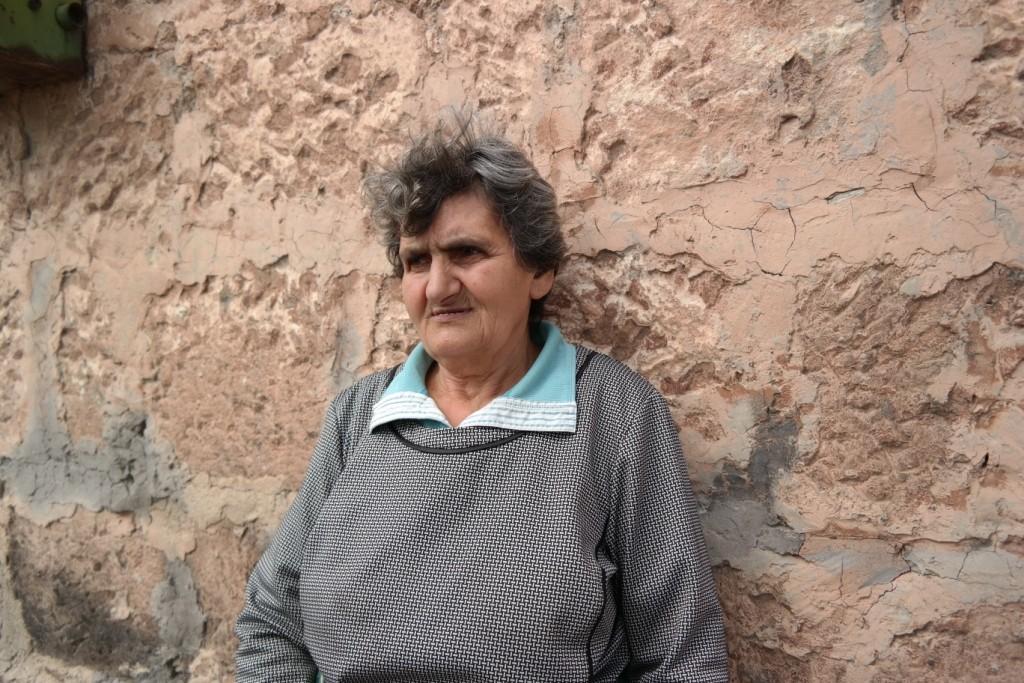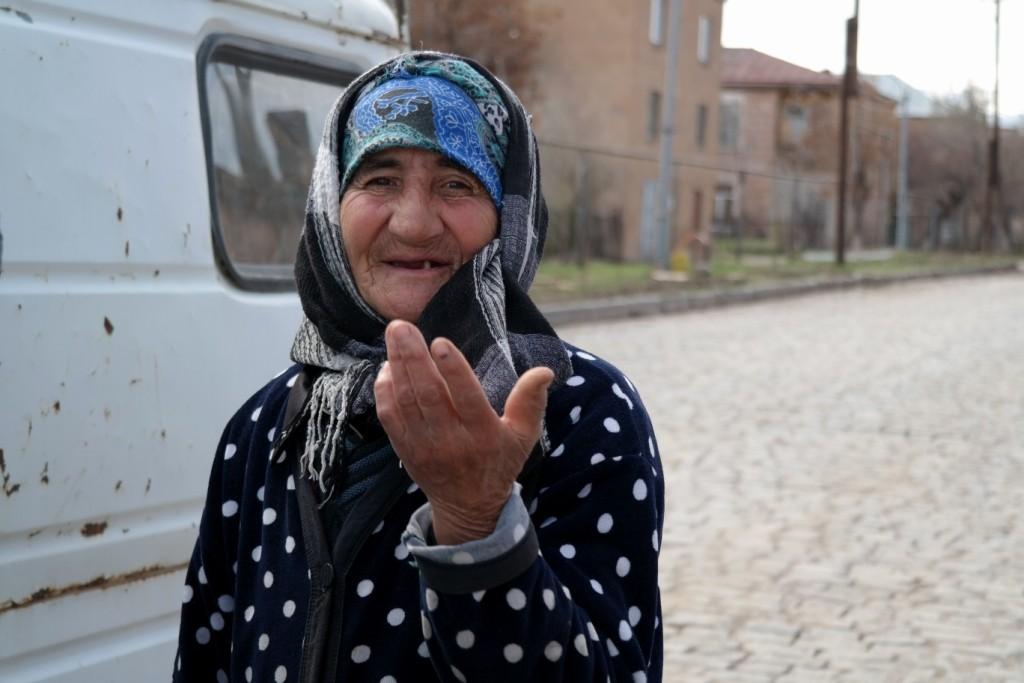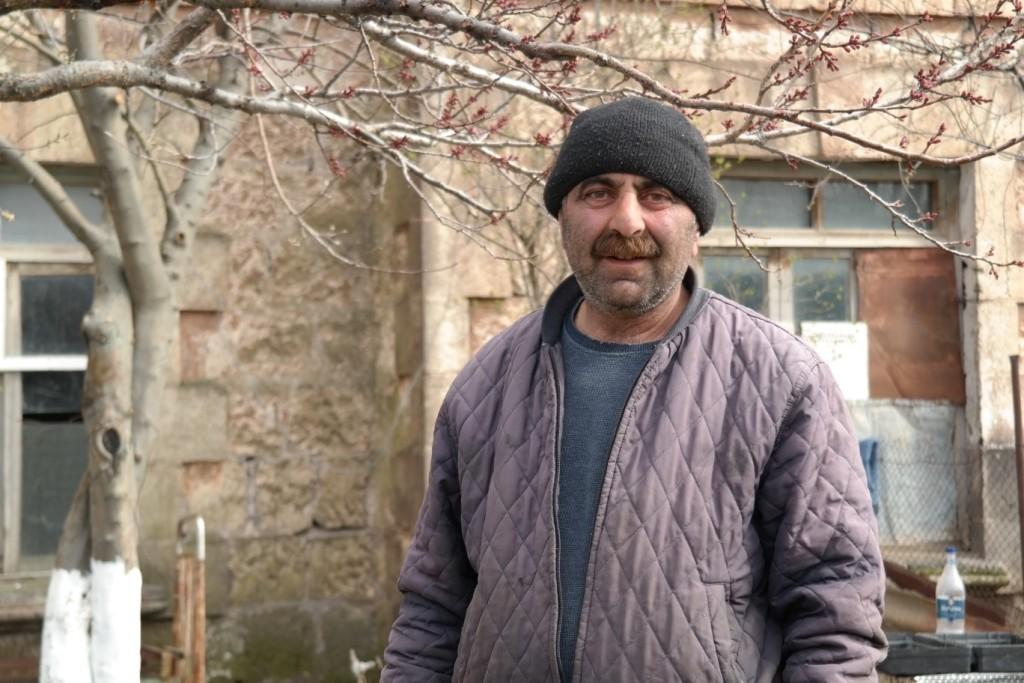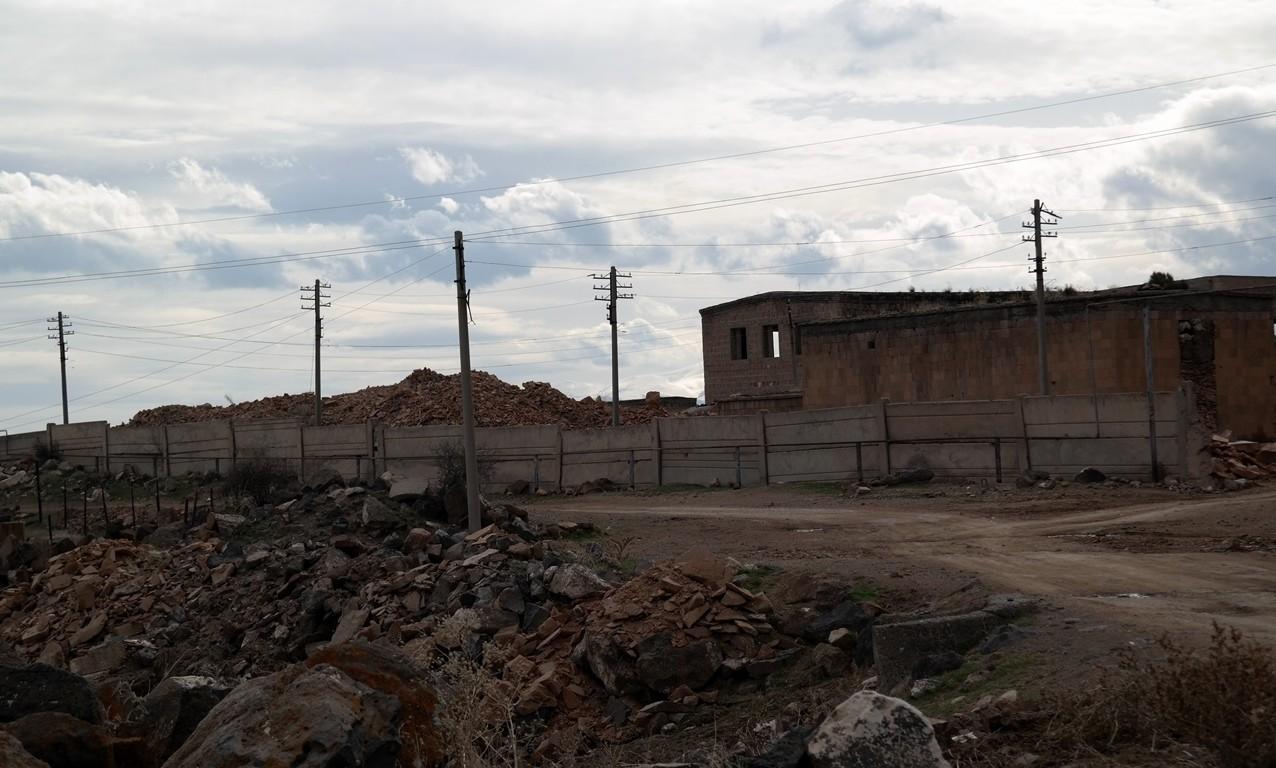
Anipemza: Residents Plant Apricot Orchards, Cut Stone, and Impatiently Wait for State of Emergency to End
Armenia’s state of emergency, declared on March 16, has further emptied traffic and commerce along the Gyumri-Armavir roadway in the north of the country.
This reporter and a Hetq cameraman travelled to the Shirak village of Anipemza, a stone’s throw from the Turkish border, to see first-hand how residents are coping under the state of emergency.
The ancient Armenian capital of Ani lies across the border, on the other side of the Akhuryan River.
Anipemza, some fifty kilometers south of Gyumri, has been part of the enlarged community of Ani since 2017. The only attraction along the road are the numerous potholes, large and small, we must navigate along the way.
We spot two tractors working the arable land above the village of Jrapi. Agricultural work has begun, but there is little activity. We reach Bagravan, then Ani, and finally Anipemza.
On the left side road leading to Anipemza is a young apricot orchard, an almost exotic phenomenon for these green areas. Vardan Grigoryan founded the orchard on ten hectares of land five years ago. Anipemza Mayor Harutyun Tarlanyan says the number of people restoring former orchards has increased of late.

The soil of Anipemza is rocky and scorched from the sun. A farmer first must dig up all the rocks in order to plant anything. Wheat, barley, potatoes and cabbage are not farmed in Anipemza in large quantities for sale.
There are few trees in the area, although it is said that there were orchards here during the Soviet era. Looking out over the land today, such claims seem unbelievable. Before reaching the village, I notice a large area separated by a metal wire and a young man carrying a bucket of water to a barely visible seedling.
The farmer is 33-year-old Gevorg Harutyunyan, a resident of Anipemza. He recently started growing apricots, and some plums, pears and cherries, on a one-hectare plot
He says that during the Soviet era there were orchards near the Yererouk cathedral. They were left unattended in the 1990s. The trees dried up and people cut them down, using the wood to heat their houses.
"We get a good apricot crop at the end of August. We now have water and growing apricots presents no problem,” says Harutyunyan. “They piped in water from Talin seven or eight years ago. It’s not for drinking. That water we also get from Talin.”
 Gevorg Harutyunyan
Gevorg Harutyunyan
The young man hurries to the bucket, waters the next seedling, and returns.
I ask how he is coping with the coronavirus crisis and self-isolation. Harutyunyan laughs.
"We are still self-isolating. I work outside all day. I have two little girls at home – four years old and nine months old. Well, what can I say? Life goes on, it hasn’t ended. I am currently unemployed because our stone tile factory is closed. Let's wait for the quarantine to end. When it does, we’ll return to normal life. As long as this situation continues, I’ll work the land.”
Thanks to Harutyunyan’s diligence, an orchard will blossom her in a few years.
The young man says that like the rest of the menfolk of Anipemza, he’s never left Armenian to work abroad.
"I started working from school age. All our villagers have jobs in the workshops, but because of this quarantine the houses are empty," Harutyunyan says. “I hope this will all end soon and that we’ll get orders for the tile. Otherwise, it hard to imagine what will happen if there’s no work.”

The village of Anipemza was founded in 1926, in connection with the operation of a stone processing plant. It is considered to be one of the first industrial settlements built in Armenia after the establishment of the Soviet regime.
The main occupation of the inhabitants is working in the stone extraction and processing plant. The area is rich in pumice, tuff and basalt. Anipemza is located on the border of the Shirak and Armavir provinces, bordering the communities of Bagravan, Ani and Tlik communities.
Anipemza’s population is tiny. 419 individuals are registered but the actual number living in the village is 290, of which 113 live on their own.

Alvard Poghosyan
The only street in Anipemza is empty except for three women standing next to a one-story house.
Alvard Poghosyan, 68, first invites us into her house home, then quickly corrects herself.
"No, we can’t go to the house. My grandkids are there. There’s a quarantine. We’ll talk outside,” Poghosyan says. “After all this passes, we’ll all go in for a coffee. Now, we’re afraid to let strangers in.”
Poghosyan isn’t bothered by state of emergency and the ensuing self-isolation. She says that much hasn’t changed in her daily life except for the fact that the menfolk are now staying inside. She says this is somewhat strange.

Nadezhda Baghramyan
Nadezhda Baghramyan, 77, tells us about how her grandson is now studying from home.
"They study by phone and by computer. When the school closed, the children remained at home.”
She recalls that a few days ago the post office employee had come to the village accompanied by the police and handed out retirement pensions on the street.
"Everything is good. We're not sick, dear girl. We go out now and then for some fresh air. The men who don't work all day are sitting in front of the televisions and computers. Did you come from Leninakan? Do you know when all this will end?” asks Mrs. Baghramyan.
It is difficult to answer her question when the whole world doesn’t know. I wish the women health and patience.
There are 19 apartment buildings in Anipemza, as well as a school, a kindergarten, two small shops and eight stone workshops. Anipemza is a border village. If there are no barbed wire, you can go down to Akhuryan gorge and cross the river and find yourself in Ani, the former Armenian capital of a thousand and one churches, across the border in Turkey There is a border guard post near the village.

Artavazd Ashkhatoyan
Artavazd Ashkhatoyan, 58, is a retired army serviceman who also once worked in a stone factory.
He says he received 1000 rubles in monthly wages during the Soviet years, and once a year they went to the Black Sea for vacation.
"Quarry workers still get good wages. Nobody from here goes to work abroad, maybe only one or two guys. They can make more here. Rich people from Yerevan buy our stone tiles. The more houses they build in the country, the better for us,” says Mr. Ashkhatoyan.

Over the phone, Anipemza Mayor Harutyun Tarlanyan tells us that some stone workshops are still operating; the ones that are outside and not enclosed.
"I also have a stone factory and all six of my guys are now working. will work. They work outside, 20-25 meters apart, cutting stone,” says Mr. Tarlanyan, adding that the only problem is selling the product.
“My workers get high wages. But this is the second month that I haven’t paid them. Let’s see what happens by the end of May,” he says.
This year, four Anipemza families have started planting orchards on one-hectare plots. The village has no suitable land for sowing crops. The land is only good for growing grass for feed.
The positive news from Anipemza, amidst the coronavirus crisis, is the mini-boom now underway to restore the orchards of old.
Residents want those orchards to blossom once again.
 Videos
Videos Photos
Photos
Comments (1)
Write a comment